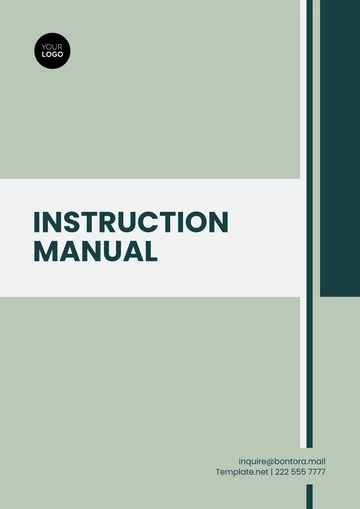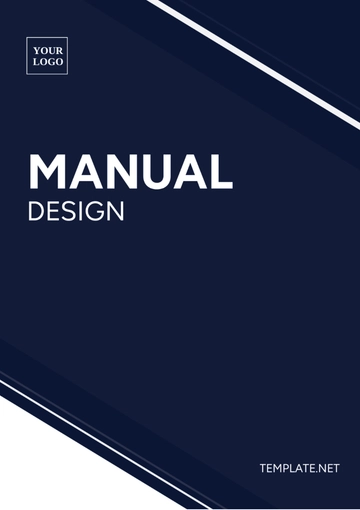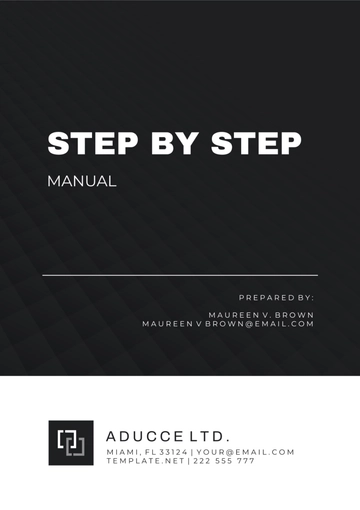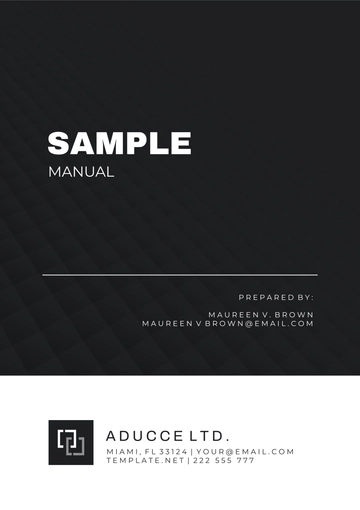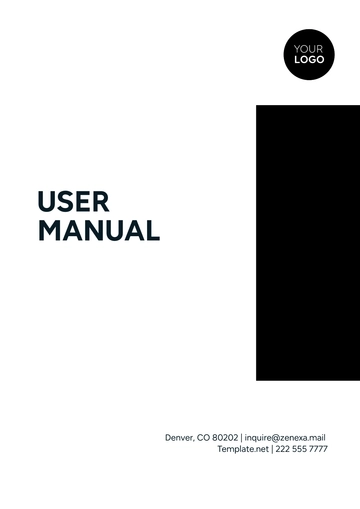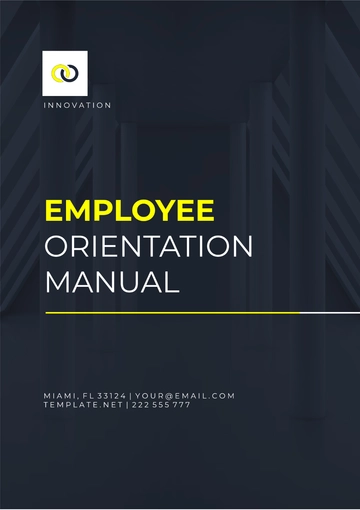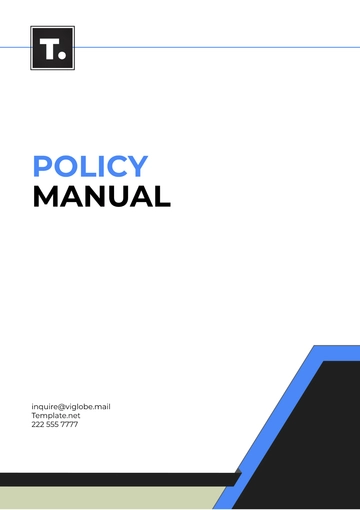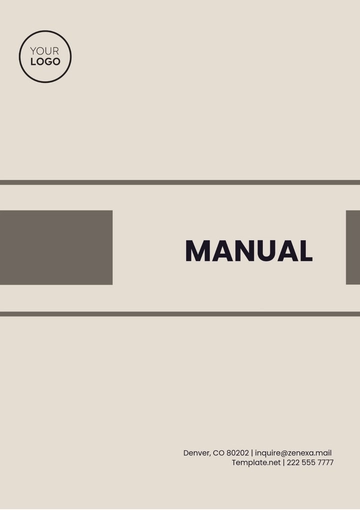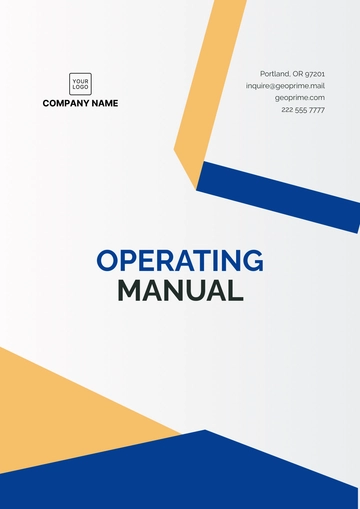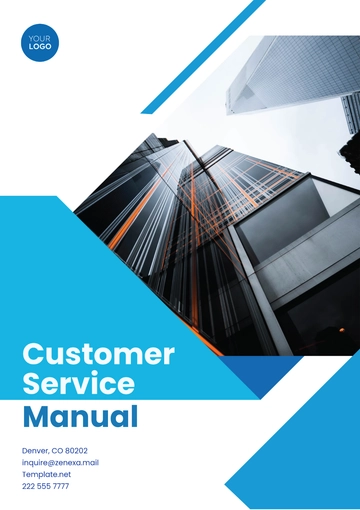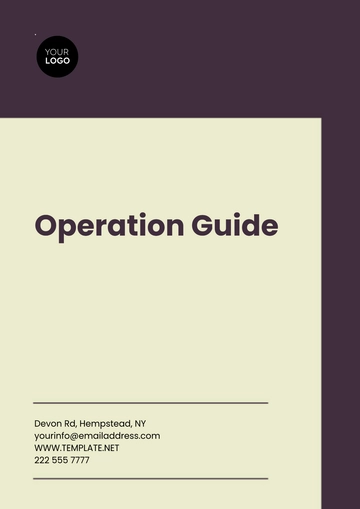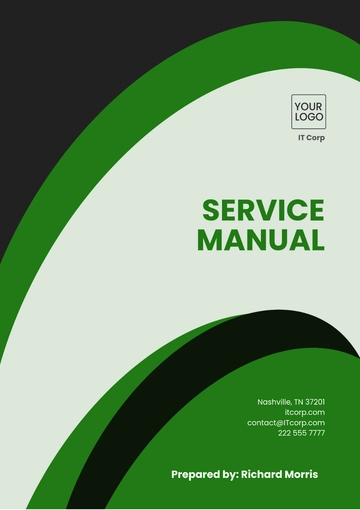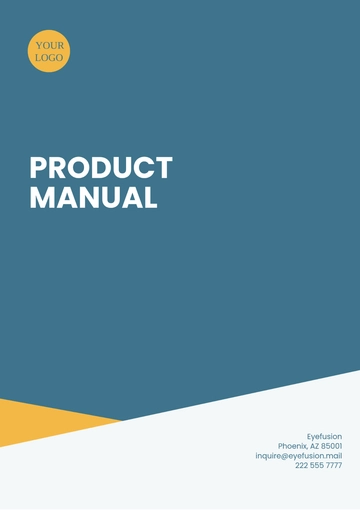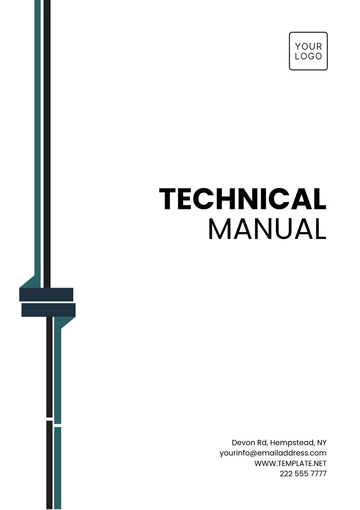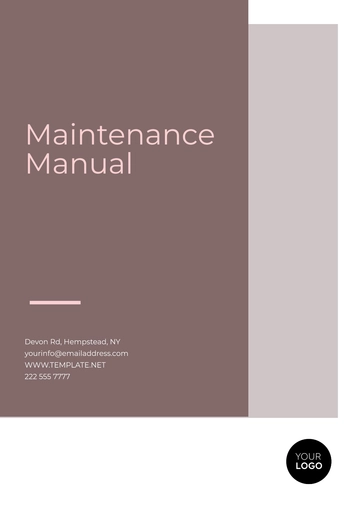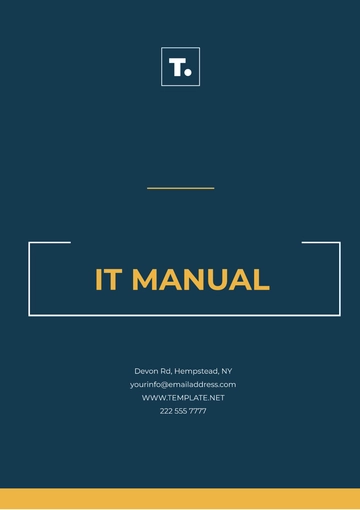Free Legal Case Audit Preparation Manual
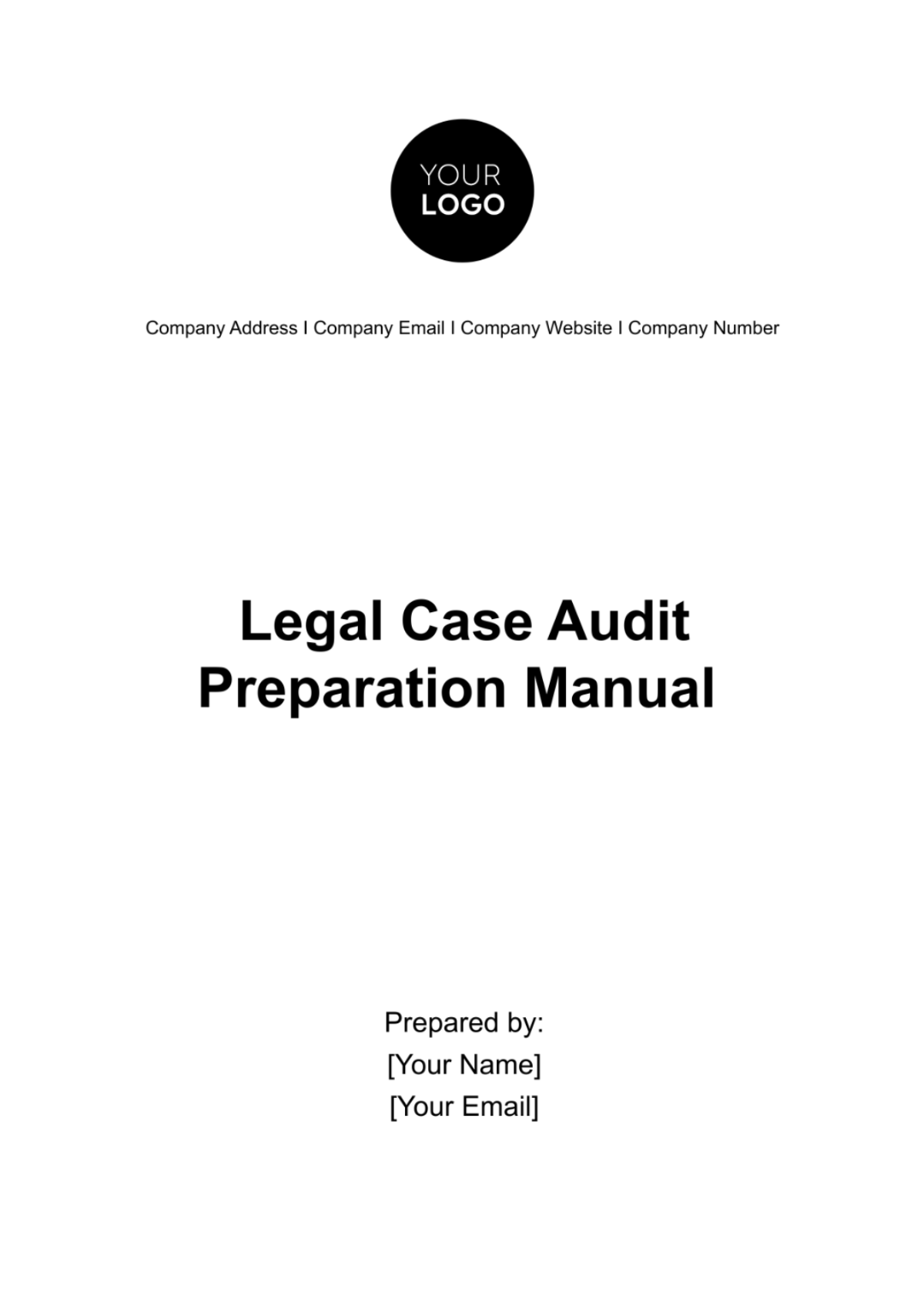
Introduction
Purpose of the Manual
This manual serves as a comprehensive guide for [Your Company Name] to prepare effectively for legal audits. Its purpose is to outline the steps, procedures, and best practices that ensure compliance with legal, financial, and operational standards. By adhering to the guidelines within, the company can navigate the audit process with confidence, addressing potential issues proactively and maintaining the highest standards of legal practice.
Scope of Legal Audits
Legal audits are comprehensive reviews conducted to ensure that a law firm or legal department operates within the bounds of applicable laws, regulations, and best practices. These audits cover various aspects, including but not limited to legal compliance, financial transactions, case management, and operational efficiency.
Importance of Preparation and Compliance
Thorough preparation for a legal audit can significantly reduce the risk of non-compliance, financial penalties, and reputational damage. This manual emphasizes the importance of systematic preparation and ongoing compliance efforts to uphold the integrity and excellence of [Your Company Name]'s legal practice.
Overview of the Audit Process
The audit process involves several stages, from pre-audit preparation, through the actual audit activities, to post-audit follow-up. Understanding each stage is crucial for effective audit management and response. This manual will guide you through these stages, ensuring a comprehensive approach to legal audit preparation.
Chapter 1: Understanding Legal Audits
Definition of a Legal Audit
A legal audit is a systematic examination of a law firm or legal department's operations, records, and procedures. Its goal is to verify compliance with legal standards, identify areas for improvement, and mitigate risks associated with non-compliance or inefficiencies.
Objectives of Legal Audits
Compliance Verification: Ensure all practices are in line with current laws and regulations.
Risk Management: Identify and address potential legal, financial, and operational risks.
Operational Efficiency: Assess and improve the efficiency and effectiveness of legal processes.
Financial Integrity: Ensure accurate financial reporting and compliance with accounting standards and regulations.
Types of Legal Audits
Types | Details |
|---|---|
Compliance Audits | Focus on adherence to legal regulations and internal policies. Financial Audits in Legal Practice: Examine financial records and transactions to verify accuracy and compliance with accounting standards. |
Process and Operational Audits | Assess the efficiency and effectiveness of legal operations and case management practices. |
The Role of Auditors in Legal Audits
Auditors are independent professionals or entities tasked with conducting the audit. They provide an objective assessment of the firm's compliance, financial health, and operational efficiency. Understanding the auditor's perspective and criteria is essential for successful audit preparation and response.
Chapter 2: Pre-Audit Preparation
Establishing an Audit Team
The success of an audit begins with the assembly of a dedicated audit team. At [Your Company Name], it is imperative to form a team with members possessing diverse skills relevant to legal, financial, and operational aspects of the audit. The team should consist of:
Audit Manager: Oversees the audit process, ensures compliance with audit standards, and acts as the primary liaison with the auditors.
Legal Advisor: Reviews legal documents and advises on legal compliance and potential legal risks.
Financial Officer: Assesses financial records, billing practices, and ensures adherence to financial regulations.
Operations Specialist: Evaluates case management procedures and operational efficiencies.
Roles and Responsibilities within the Audit Team
Role | Responsibilities |
|---|---|
Audit Manager | Coordinate the audit preparation process, manage team communication, and serve as the point of contact. |
Legal Advisor | Ensure all legal documents are current and compliant, and identify legal risks. |
Financial Officer | Review financial transactions and records for accuracy and compliance with laws and best practices. |
Operations Specialist | Assess operational workflows for efficiency and compliance with ethical standards. |
Gathering Preliminary Information
Gathering and organizing preliminary information is critical for a smooth audit process. The audit team should compile:
Case Files: A complete list of active and concluded cases within the audit period, including case summaries and outcomes.
Financial Records: Billing statements, receipts, trust account records, and financial statements for the audit period.
Communication Records: Emails, letters, and meeting notes relevant to case management and client interactions.
This information should be organized and indexed for easy access during the audit.
Understanding the Audit Criteria and Standards
Understanding the criteria and standards against which [Your Company Name] will be audited is crucial for effective preparation. The audit team should review:
Legal Compliance Standards: Regulations and laws applicable to legal practice and case management.
Financial Compliance Standards: Accounting principles, financial reporting requirements, and trust account regulations.
Operational Standards: Best practices for case management, client communication, and data privacy.
This review will help identify areas of potential non-compliance and focus the preparation efforts.
Preparing for the Audit
Legal Documentation Review
The Legal Advisor leads this step, ensuring all documents are up-to-date and comply with current laws and regulations. The review includes:
Client Agreements: Verify that all agreements are signed and reflect current terms of service.
Court Documents: Ensure filings and responses are properly documented and stored.
Compliance Documents: Check that all required licenses, permits, and compliance certificates are valid and accessible.
Financial Review and Compliance
The Financial Officer is responsible for conducting a thorough review of [Your Company Name]'s financial dealings, including:
Billing Practices: Ensure billing procedures are transparent, accurate, and comply with legal requirements.
Trust Accounts: Confirm that trust accounts are managed according to regulatory standards, with clear records of all transactions.
Financial Statements: Review financial statements for accuracy and compliance with accounting principles.
Operational Review
The Operations Specialist examines the efficiency and compliance of case management and operational processes:
Case Management Procedures: Assess the effectiveness of case tracking systems, document management practices, and client communication methods.
Workflow Efficiency: Identify bottlenecks or inefficiencies in legal processes and suggest improvements.
Data Privacy: Ensure compliance with data protection laws and client confidentiality requirements.
Chapter 3: Review of Legal Documentation
Inventory of Legal Documents
Begin by conducting a comprehensive inventory of all legal documents within [Your Company Name]. This includes client agreements, court filings, internal policy documents, and compliance certifications. The inventory should categorize documents by type, relevance, and date to streamline the review process.
Verification of Document Authenticity and Completeness
Each document must be verified for authenticity and completeness. Ensure that all client agreements are signed and up-to-date, court documents are filed correctly, and compliance documents are current. This step is crucial for identifying any missing or outdated documents that could pose compliance risks.
Legal Compliance Checklist
Develop a legal compliance checklist based on the legal standards and regulations applicable to [Your Company Name]'s operations. This checklist should cover areas such as client confidentiality, attorney-client privilege, conflict of interest policies, and regulatory compliance. Use this checklist to systematically assess each document's compliance.
Identifying and Addressing Gaps in Documentation
Upon identifying gaps in documentation or areas of non-compliance, implement a corrective action plan. This may involve updating documents, obtaining missing signatures, or revising policies and procedures to ensure full compliance.
Chapter 4: Financial Review and Compliance
Overview of Financial Audit Requirements in Legal Practice
Introduce the financial audit by outlining the specific requirements and standards that [Your Company Name] must meet. This includes adherence to Generally Accepted Accounting Principles (GAAP), compliance with trust account regulations, and accurate financial reporting.
Assessing Billing and Financial Transactions
Conduct a detailed review of billing practices and financial transactions. Ensure that billing is accurate, transparent, and complies with legal standards. Review trust account transactions for compliance with ethical and legal requirements, ensuring that client funds are managed appropriately.
Compliance with Trust Account Regulations
Trust accounts must be managed in strict compliance with legal and ethical standards. Review trust account records for accuracy, proper client fund segregation, and timely disbursements. Identify any discrepancies or compliance issues for immediate resolution.
Identifying Financial Risks and Irregularities
Analyze financial records to identify potential risks and irregularities, such as inconsistent billing practices, unaccounted funds, or discrepancies in financial statements. Implement corrective measures to address identified issues and strengthen financial controls.
Chapter 5: Process and Operational Review
Evaluating Case Management Procedures
Review [Your Company Name]'s case management procedures for efficiency and effectiveness. Assess how cases are allocated, tracked, and documented from initiation to closure. Identify any bottlenecks or inefficiencies that may impact case outcomes or client satisfaction.
Efficiency of Legal Processes and Workflows
Analyze the workflows and processes within [Your Company Name] to ensure they support efficient legal practice. This includes document management, client communication, and internal collaboration. Recommend improvements to streamline operations and enhance productivity.
Compliance with Ethical Standards
Ensure that [Your Company Name]'s operations adhere to the highest ethical standards. This includes confidentiality, conflict of interest avoidance, and professional conduct. Regular training and awareness programs can reinforce these standards among staff.
Data Protection and Privacy Compliance
In light of increasing data protection regulations, review [Your Company Name]'s compliance with data privacy laws. Assess the security of client data, the effectiveness of data protection policies, and the staff's awareness of data privacy practices. Address any vulnerabilities to prevent data breaches and ensure client trust.
Chapter 6: Preparing for the Auditor's Visit
Steps | Details |
|---|---|
Creating an Audit Schedule | Develop a detailed schedule for the auditor's visit, outlining when and where each part of the audit will take place. This schedule should allocate sufficient time for reviewing documents, interviewing staff, and inspecting physical facilities if necessary. Communicate this schedule to all relevant team members well in advance. |
Organizing Documentation and Evidence | Ensure that all documentation and evidence are organized and readily accessible for the auditor. This includes legal documents, financial records, and proof of compliance with operational procedures. Consider creating a digital repository where auditors can easily access and review documents. |
Pre-Audit Meetings and Briefings | Conduct pre-audit meetings with key staff members to brief them on the audit process, expectations, and how to interact with auditors. Emphasize the importance of honesty and transparency during the audit. Review any areas of potential concern and how they should be addressed if raised. |
Handling Auditor Requests and Inquiries | Establish a protocol for responding to auditor requests and inquiries. Designate a point person, typically the Audit Manager, to coordinate responses and ensure that auditors receive accurate and timely information. This helps to maintain an organized and efficient audit process. |
Chapter 7: During the Audit
Managing the Audit Process
The Audit Manager should oversee the audit process, ensuring that the audit schedule is followed and that any issues are promptly addressed. Regular check-ins with the auditor and the audit team can help identify and resolve concerns early on.
Communication with the Audit Team
Maintain open lines of communication with the internal audit team throughout the auditor's visit. This includes daily debriefs to discuss findings, concerns, and strategies for addressing any issues the auditor identifies.
Documenting the Audit Findings
Keep detailed records of the auditor's findings and any related discussions. This documentation will be invaluable for the post-audit review and for implementing any recommended changes.
Immediate Remediation Actions
If the auditor identifies any compliance issues or other concerns that can be immediately rectified, take action at once. Demonstrating a proactive approach to compliance and improvement can positively influence the audit outcome.
Chapter 8: Post-Audit Activities
Review and Analysis of Audit Findings
After the audit, conduct a thorough review of the auditor's findings. This should involve the audit team and relevant department heads to ensure a comprehensive understanding of the audit results.
Developing a Corrective Action Plan
Based on the audit findings, develop a corrective action plan to address any compliance issues, inefficiencies, or other concerns identified. This plan should include specific actions, responsible individuals, and timelines for completion.
Implementing Changes and Monitoring Progress
Implement the corrective action plan, monitoring progress closely to ensure that changes are effectively integrated into [Your Company Name]'s operations. Regular updates should be provided to senior management and stakeholders on the status of these improvements.
Preparing the Final Audit Report
Compile a final audit report that includes the auditor's findings, the corrective action plan, and any progress made towards resolving issues. This report should be presented to senior management and used as a basis for continuous improvement.
Chapter 9: Best Practices for Legal Audit Preparation
Maintaining Ongoing Compliance
Emphasize the importance of maintaining ongoing compliance with all legal, financial, and operational standards. Regular internal reviews and compliance checks can help [Your Company Name] stay ahead of potential issues.
Regular Review and Update of Legal Documents
Ensure that legal documents are regularly reviewed and updated to reflect current laws and regulations. This includes client contracts, compliance policies, and employee handbooks.
Financial Management and Oversight
Implement robust financial management practices, including regular audits of trust accounts and transparent billing practices. This helps prevent financial discrepancies and ensures compliance with accounting standards.
Training and Awareness for Legal Staff
Conduct regular training sessions for legal staff on compliance, ethics, and best practices. Keeping staff informed and engaged is crucial for maintaining high standards of legal practice.
Chapter 10: Case Studies and Examples
This chapter provides real-world examples and case studies to illustrate best practices in legal audit preparation and response. By examining these scenarios, [Your Company Name] can gain insights into effective strategies for navigating the audit process, addressing challenges, and implementing corrective actions.
Case Study 1: Compliance Audit Success
Background: | A mid-sized law firm faced its first comprehensive compliance audit. Initial internal reviews revealed gaps in their document management and client confidentiality practices. |
Challenge: | The firm needed to quickly overhaul its document management system and enhance its confidentiality protocols to meet compliance standards before the auditor's visit. |
Action Taken: |
|
Outcome: | The firm successfully passed the compliance audit with commendations for its proactive approach to addressing potential compliance issues. The new systems and protocols also improved overall operational efficiency. |
Lessons Learned: | Early identification of potential issues and proactive measures are crucial for audit success. Investing in training and new technologies can significantly enhance compliance and operational effectiveness. |
Case Study 2: Financial Audit Resolution
Background: | A large legal department within a corporation faced a financial audit that uncovered discrepancies in their billing practices and trust account management. |
Challenge: | The department needed to address the audit findings, rectify the discrepancies, and prevent future issues in financial management. |
Action Taken: |
|
Outcome: | The department corrected the identified discrepancies and passed a follow-up audit. The new procedures and tools improved financial transparency and efficiency. |
Lessons Learned: | Effective financial management requires robust procedures and ongoing staff training. Leveraging technology can provide better oversight and prevent future issues. |
Case Study 3: Operational Efficiency Improvement
Background: | A small law firm recognized the need to improve its operational efficiency and case management processes to prepare for an upcoming operational audit. |
Challenge: | The firm needed to streamline its case management processes and improve overall efficiency without compromising the quality of legal services. |
Action Taken: | Conducted an internal review to identify inefficiencies in current case management processes. Adopted a case management software solution to automate and streamline workflows. Reorganized the team structure to improve collaboration and efficiency. Initiated regular review meetings to monitor process improvements and make ongoing adjustments. |
Outcome: | The firm's operational audit revealed significant improvements in efficiency and case management, leading to higher client satisfaction and increased capacity for case intake. |
Lessons Learned: | Continuous improvement and adaptation of technology are key to enhancing operational efficiency. Regular monitoring and adjustment of processes ensure sustained progress. |
Conclusion
The process of preparing for a legal audit is a comprehensive and multifaceted endeavor that requires meticulous planning, organization, and implementation of best practices across all levels of [Your Company Name]. Through the detailed guidance provided in this manual, from understanding the fundamentals of legal audits to implementing post-audit improvements, we have laid out a roadmap designed to ensure your company not only meets but exceeds the standards expected in today's legal environment.
Summary of Key Points
Preparation is Key: Effective audit preparation involves a thorough review of legal, financial, and operational processes within the company. Establishing dedicated teams and clear responsibilities ensures a focused and efficient approach to audit readiness.
Compliance and Improvement: The goal of audit preparation extends beyond mere compliance. It is an opportunity for [Your Company Name] to identify areas for improvement, enhance operational efficiency, and reinforce the company's commitment to legal and ethical standards.
Engagement and Training: Engaging the entire team and investing in regular training are fundamental to maintaining an audit-ready stance. Continuous education helps in staying abreast of legal and regulatory changes, thereby fostering a culture of compliance and excellence.
Technology as a Tool: Leveraging technology can streamline processes, improve accuracy in documentation and financial management, and offer insights into areas needing improvement. A proactive approach to technology adoption can significantly aid in audit preparation and overall operational efficiency.
Continuous Improvement: The audit process does not end with the auditor's final report. It is a cycle of ongoing improvement, where feedback and findings from each audit inform future strategies and actions to enhance compliance and operational performance.
Encouragement for Continuous Improvement
The journey towards achieving and maintaining audit readiness is ongoing. It demands a commitment to excellence, a willingness to adapt, and a proactive stance on identifying and addressing potential issues before they escalate. [Your Company Name] is encouraged to view audit preparation not as a periodic task but as a continuous cycle of improvement that strengthens the company's operations, enhances its reputation, and ensures its long-term success.
Final Thoughts on the Importance of Audit Preparedness
In an ever-evolving legal landscape, the importance of audit preparedness cannot be overstated. It is a critical component of risk management, a reflection of [Your Company Name]'s dedication to operational excellence, and a testament to its commitment to upholding the highest legal and ethical standards. By embracing the principles and practices outlined in this manual, [Your Company Name] can navigate the complexities of legal audits with confidence, turning potential challenges into opportunities for growth and improvement.
As we conclude this manual, let it serve as a reminder that the strength of [Your Company Name]'s legal practice is not just measured by its ability to pass audits but by its ongoing commitment to excellence, integrity, and continuous improvement. Let us move forward with the resolve to uphold these values, ensuring that [Your Company Name] remains a paragon of legal excellence and professionalism.
- 100% Customizable, free editor
- Access 1 Million+ Templates, photo’s & graphics
- Download or share as a template
- Click and replace photos, graphics, text, backgrounds
- Resize, crop, AI write & more
- Access advanced editor
Introducing the Legal Case Audit Preparation Manual Template by Template.net. Streamline your audit readiness with this customizable and editable resource. Utilize our Ai Editor Tool to tailor the manual to your firm's specific needs effortlessly. Enhance preparation processes for smoother audits. Simplify compliance efforts with this essential resource. Equip your team for successful audit outcomes.
